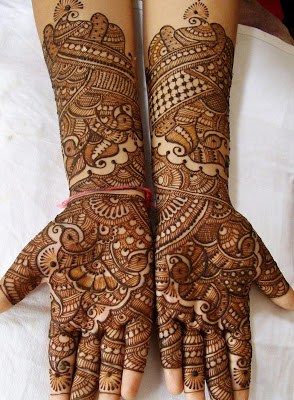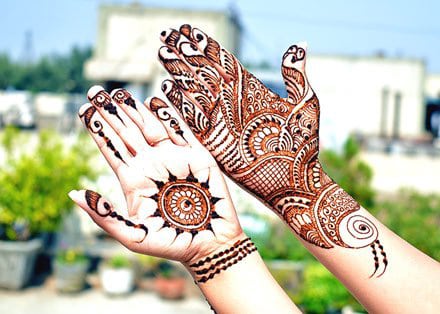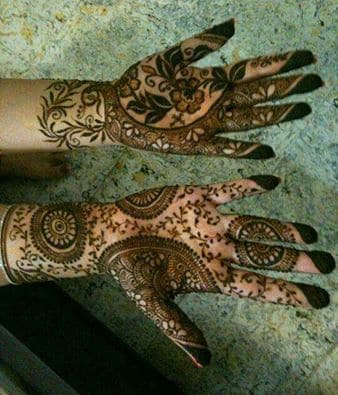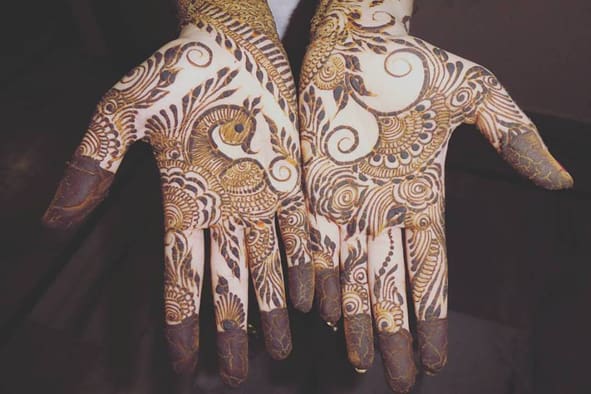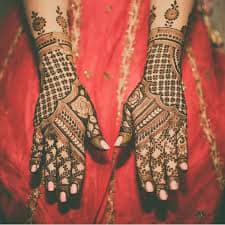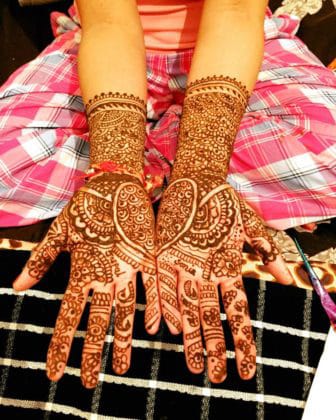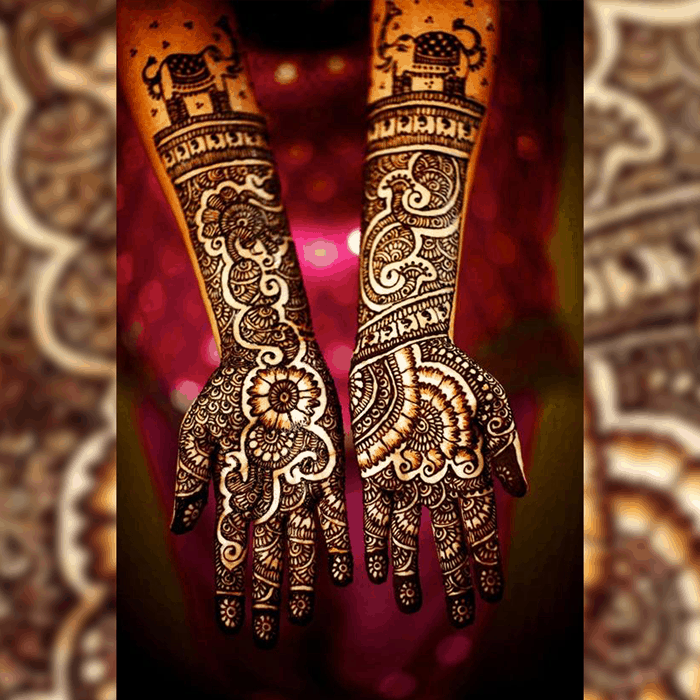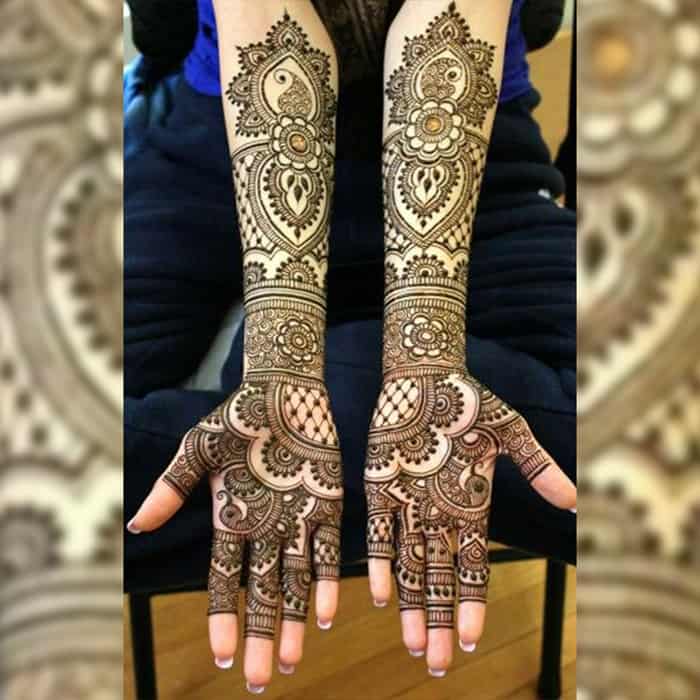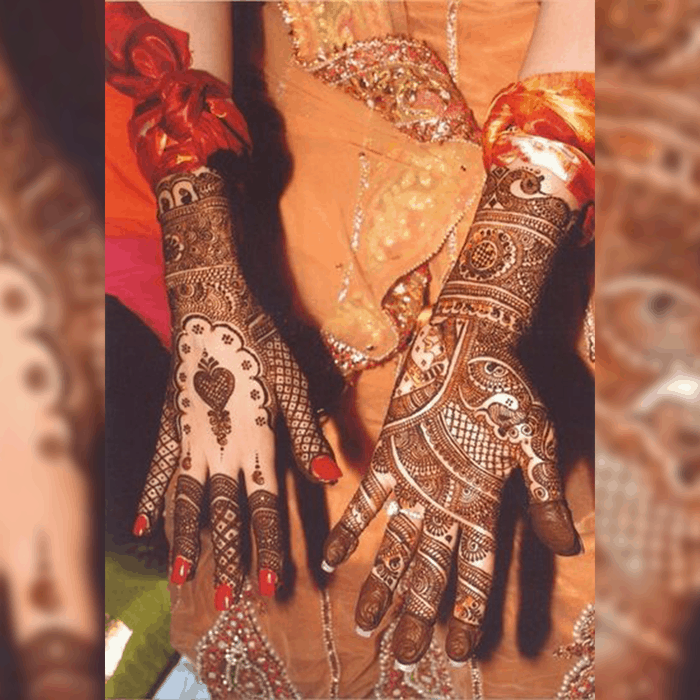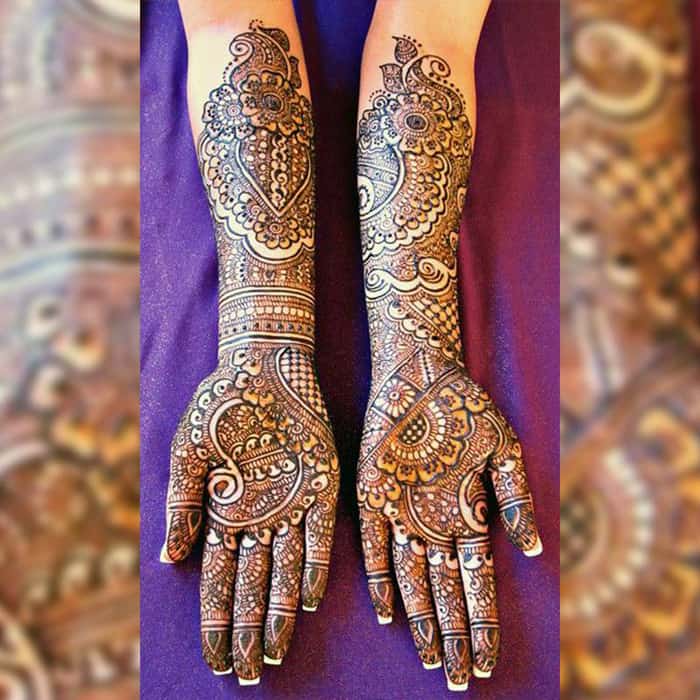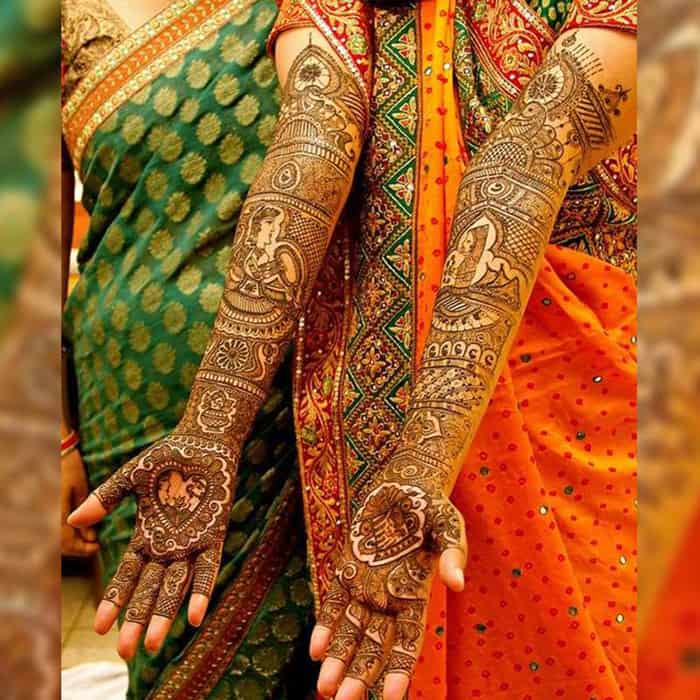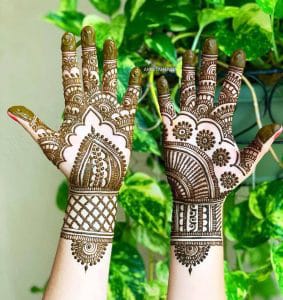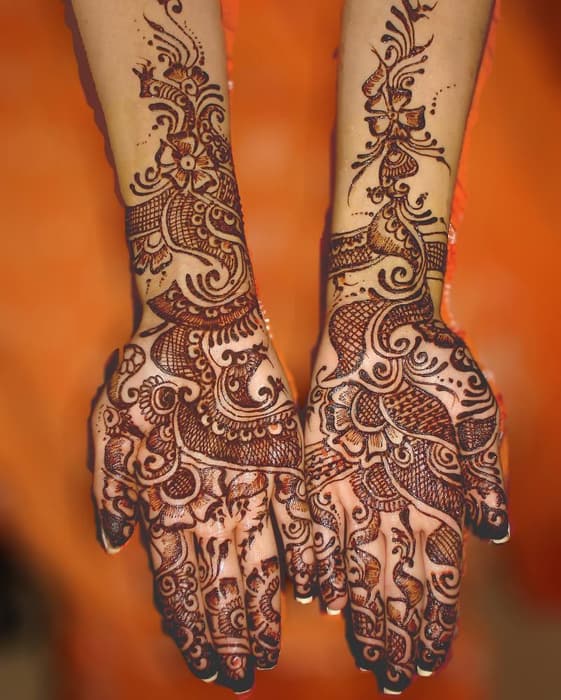Mehndi – Custom and Designs
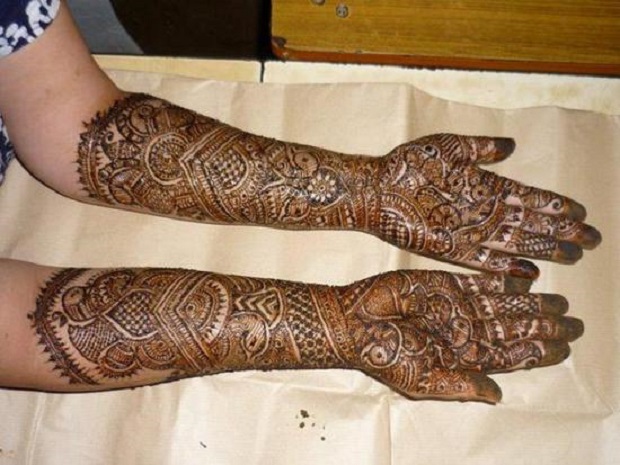
Mehndi or henna is a paste that is bought in a cone-shaped tube and is made into designs for men and women. Mehndi is derived from the Sanskrit word mendhikā. The use of mehndi and turmeric is described in the earliest Hindu Vedic ritual books. Women usually apply variations of henna or mehndi design patterns on their hands and feet.
Mehndi is the local variant of henna designs in India and neighboring countries such as Bangladesh, Pakistan, and Sri Lanka, women use mehndi for festive occasions, such as weddings, religious events, and traditional ceremonies. The art of applying henna in hands and feet is known as Mehndi and it is a very old custom and ancient art form of the Asian subcontinent. The propagators were the Mughals. The Mughals taught us all about the history of Mehndi and introduced it to India during the 12th century AD. During that period the royal and rich use to decorate themselves with it. The patterns were intricately made by the artists or the beauticians.
The origin can be from Egypt because it was one of the art forms in Egypt. Henna has the power of medicine was also used as a cosmetic and for its healing power for ages. The beautiful patterning prevalent in India today has emerged only in the 20th century. India, most of the women from that time in India are depicted with their hands and feet with red stain designs. The art of Mehndi has existed for centuries. No exact place of its origin is identified because of people in different cultures moving through the continents and taking their art forms with them and therefore sharing their art with everyone along the way.
The bushes can be grown in dry and hot conditions. The leaves are processed as a skin conditioner and as a reliever for rashes. The henna used for mehndi comes from a bush that is grown in Africa and India. Henna is used for hair dye and as a conditioner.
The art of Mehndi is referred to as henna or Mehndi. Some people like permanent tattoos and some are comfortable with temporary forms of body art. When you use henna to decorate your body it cools your body too.
Henna patterns are beautiful and have four different styles.
1. The Middle Eastern style is mostly made up of floral patterns similar to the Arabic paintings.
2. The North African style follows the shape of the hands and feet using floral patterns.
3. The Indian and Pakistani designs include lines patterns and teardrops.
4. The Indonesian and Southern Asian styles were a mix of Middle Eastern and Indian designs using blocks of color on the very tips of their toes and fingers.
Indian marriages are known for their many rituals. In fact, the beauty of Indian weddings comes forth in the numerous traditions that are associated with a special celebration. Indian weddings are incomplete without dance, music, and lots of laughter. Furthermore, Indian weddings are not one-day ceremonies. Pre-wedding ceremonies begin before the wedding and can sometimes be a week-long celebration.
Indian weddings are incomplete without the mehndi ceremony. The ritual of the mehndi ceremony is followed in every part of the country where the hands of the bride are adorned with the lovely red color of the mehndi. On these festive or wedding occasions mostly traditional Indian designs are made on the hands of the bride. While the bride has a very elaborate pattern done on her hands and feet, the groom usually has just a token design. Mehndi is a very important part of both Hindu and Muslim weddings in India. In fact, the application of mehndi is a custom during any celebration in India, be it Karva Chauth, Teej, Diwali, Ramzan, or any other festival.
The Mehendi function is usually organized with the sangeet function. So, it has a festive feel to it with the women dancing and singing traditional songs on the Mehendi ritual. The bride is dressed in light color clothes with light jewelry. According to the custom, the bride must not step out of the house after the Mehendi ritual until the wedding day. It is believed that the darker and deeper the henna stains the more the husband and the in-laws will love her bride. The ritual of Mehendi signifies the strength and power of love in a marriage so it is regarded as a good omen for the would-be bride. It is said that the longer the bride retains the Mehendi, the more auspicious would be her future.
Suggested Read: Henna For Hair
Here is a collection of our beautiful Mehndi designs…
